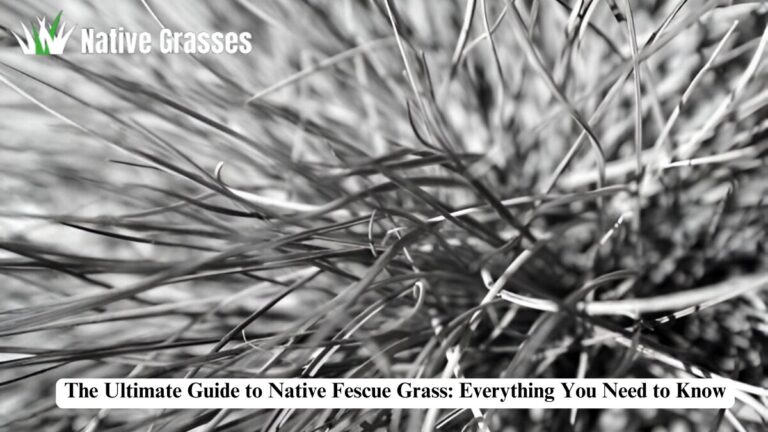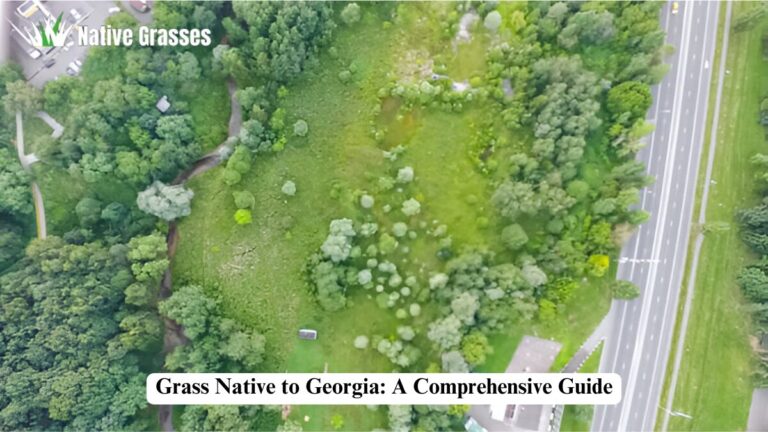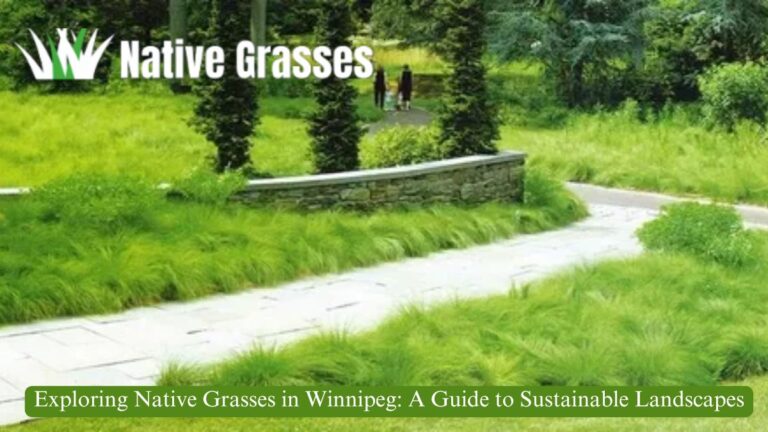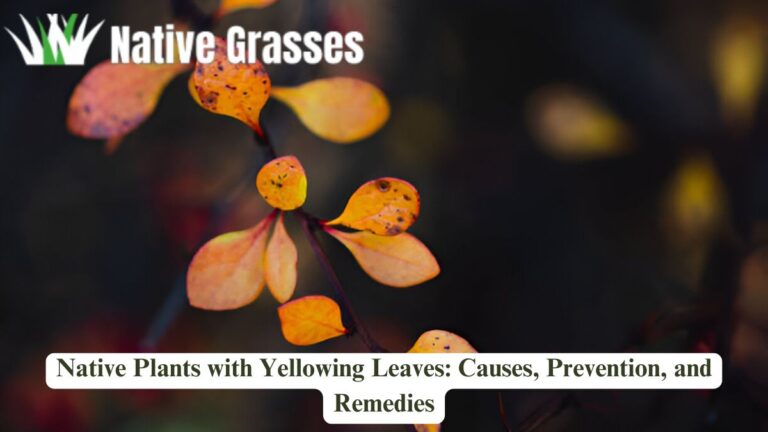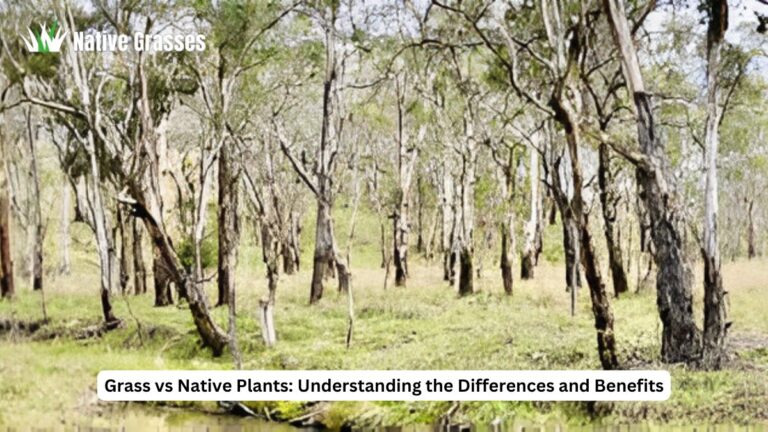The Importance of Native Grasses in Zambia

Zambia is home to one of the most diverse ecosystems in Southern Africa, teeming with wildlife and a vast array of plant species. Among these, native grasses hold a special place in shaping the country’s landscapes and sustaining its ecosystems. Whether you’re walking through a vibrant savannah, observing the delicate balance of wetlands, or exploring the extensive plateaus, grasses form the foundation of Zambia’s natural environment. In this article, we will take an in-depth look at Zambia’s native grasses, their ecological and economic roles, and how conservation efforts are safeguarding them for the future.
Understanding Native Grasses and Their Role
Native grasses are species that have naturally evolved in a particular region over thousands of years, forming a vital part of the local ecosystem. In Zambia, these grasses are adapted to the country’s climate, soil types, and ecological zones. They play an essential role in the biodiversity of Zambia’s grasslands, savannahs, and other ecosystems.
Unlike invasive species, which are often introduced by human activity and disrupt local ecosystems, native grasses have evolved to thrive in Zambia’s natural environments. These species possess a high tolerance to the country’s varied climates, ranging from the wet and humid conditions in the north to the more arid areas in the south.
The Ecological Significance of Native Grasses
Native grasses serve multiple ecological functions that are crucial to maintaining Zambia’s environmental health. They act as ground cover, preventing soil erosion by stabilizing the soil with their roots. In a country where agriculture is central to the economy, healthy soil is fundamental to sustaining crop production and livestock grazing. Additionally, grasses play a vital role in water retention, which helps to maintain the delicate balance of Zambia’s ecosystems.
These grasses also support local wildlife by providing food and shelter. Birds, insects, and small mammals rely on native grasses for survival, either for grazing or nesting. In this sense, they form the foundation of the food web, providing sustenance for a wide variety of species.
The Benefits of Native Grasses to Farmers and Local Communities
Native grasses are more than just an ecological asset. They are also a significant resource for local communities, particularly in rural areas where agriculture and livestock farming are the primary sources of livelihood. These grasses provide essential grazing materials for cattle, goats, and other livestock. In fact, grasses like Cenchrus ciliaris and Panicum maximum are frequently used for pasturelands and hay production.
Moreover, certain species of grass have practical uses beyond grazing. They are often harvested for traditional crafts such as weaving mats, baskets, and thatched roofs, an important cultural practice in many parts of Zambia. The sustainable harvesting of native grasses can thus provide income and enhance the quality of life for local communities.
Zambia’s Unique Ecosystems and the Role of Grasses
The Geography and Climate of Zambia
Zambia’s diverse geography and climate play a significant role in the growth and distribution of native grasses. The country lies in the heart of Africa, bordered by eight other countries, and features a mix of highland plateaus, valleys, and river systems. The climate varies from tropical in the north to arid in the south, with seasonal rainfall patterns that influence the types of grasses that can thrive in different regions.
The country’s varied ecosystems—ranging from wetlands to dry forests—offer a rich habitat for a wide array of grass species. For instance, in the Southern and Western Provinces, where conditions are drier, grasses like Hyparrhenia hirta (Common Thatch Grass) dominate. In contrast, the more humid areas in the north, like the Luangwa Valley, support species such as Panicum maximum.
Grassland Ecosystems and Their Importance
Zambia’s grasslands are critical to the functioning of its ecosystems. They are home to a variety of wildlife, provide grazing land for livestock, and play a significant role in carbon sequestration. Grasslands act as a filter for rainwater, preventing runoff and allowing water to soak into the ground, which helps to replenish groundwater reserves.
In addition, grasslands offer food and shelter to many animal species, including Zambia’s iconic wildlife such as elephants, buffalo, and zebras. These grasslands, especially in areas like the Kafue National Park and the South Luangwa National Park, are crucial to the survival of both wildlife and local communities that depend on the land for agriculture and pasture.
How Native Grasses Adapt to Zambia’s Climate
Zambia’s climate presents challenges for plant life, with dry spells often followed by intense rainfall. Native grasses have adapted to these conditions by developing deep root systems that can access water even during dry seasons. Some species, like Sporobolus pyramidalis (Pyramid Grass), have developed fire resistance, which is critical during Zambia’s dry season when fires are common.
Grasses like Eragrostis tef (Teff) also exhibit drought-resistant traits, making them highly beneficial for areas where rainfall is erratic. These adaptations ensure that native grasses can survive and thrive in Zambia’s diverse and often challenging climates.
Common Native Grass Species in Zambia
Key Species Found in Zambia
Zambia is home to a wide range of native grass species, each with its unique characteristics and benefits. Some of the most common species include:
- Cenchrus ciliaris (Buffel Grass): Known for its drought tolerance, this species is one of the most widely cultivated grasses for grazing in Zambia.
- Panicum maximum (Guinea Grass): This is a tall grass often found in the more humid areas of Zambia. It’s important for livestock grazing due to its high nutritional value.
- Sporobolus pyramidalis (Pyramid Grass): This species thrives in drier, open landscapes and is a key component of Zambia’s savannah ecosystem.
- Hyparrhenia hirta (Common Thatch Grass): Used extensively for thatching roofs, this species is also a vital grazing grass in the southern parts of Zambia.
- Eragrostis tef (Teff): This grass has gained attention for its use in food production and livestock feed.
Ecological Benefits of Native Grasses
Each species plays an essential role in maintaining ecological balance. For instance:
- Cenchrus ciliaris prevents soil erosion due to its strong root system.
- Panicum maximum is not only valuable for grazing but also provides cover for wildlife.
- Hyparrhenia hirta is particularly beneficial in areas prone to drought as it retains moisture in the soil.
- Sporobolus pyramidalis helps control soil erosion in areas with frequent fires.
In addition to these ecological benefits, native grasses also help improve soil fertility by enriching the soil with organic matter through decaying roots and leaves.
Distribution of Grasses Across Zambia
Zambia’s diverse ecosystems support the growth of different types of grasses. Grasses like Eragrostis tef and Cenchrus ciliaris are commonly found in the dry regions of Southern and Western Zambia, while species like Panicum maximum are more common in the wetter areas in the north and east.
The Ecological Importance of Native Grasses
Soil Conservation and Erosion Control
One of the most crucial roles native grasses play is in soil conservation. In Zambia’s largely agricultural landscape, soil erosion can be a significant problem, especially in areas that experience heavy rainfall. Native grasses help to hold the soil in place through their extensive root systems. This reduces the risk of soil erosion caused by wind and water runoff.
Moreover, native grasses improve soil fertility by breaking down organic matter, which increases nutrient availability for crops. In Zambia’s agricultural regions, the presence of healthy grasslands is vital for maintaining the productivity of the land.
Supporting Biodiversity
Zambia is home to a rich diversity of wildlife, much of which relies on native grasses for food and shelter. From large herbivores like elephants and buffalo to smaller mammals, birds, and insects, native grasses provide the habitat necessary for survival. Many species of birds and small mammals depend on grasses for nesting and protection from predators.
Additionally, native grasses support pollinators, such as bees and butterflies, which are essential for the pollination of plants, including food crops. This interconnectedness highlights the crucial role that grasses play in Zambia’s broader ecological health.
Climate Regulation and Carbon Sequestration
Native grasses also contribute to climate regulation through carbon sequestration. They absorb carbon dioxide from the atmosphere and store it in their roots and soil. This helps to mitigate the impacts of climate change, particularly in the face of increasing temperatures and unpredictable rainfall patterns. The ability of grasses to act as carbon sinks makes them a valuable resource in the fight against global warming.
The Economic Role of Native Grasses
Livestock Grazing and Agricultural Use
In Zambia, where agriculture is a significant part of the economy, native grasses are vital for livestock farming. Species like Cenchrus ciliaris and Panicum maximum provide nutritious grazing material for cattle, goats, and sheep. These grasses help improve livestock productivity by providing essential nutrients that support healthy growth and milk production.
Moreover, grasslands are used for hay production, which is especially important during the dry season when pasturelands are scarce. By preserving native grass species, Zambia can ensure a consistent and sustainable supply of feed for its livestock sector.
Traditional Uses of Grasses
Beyond their role in agriculture, native grasses are also used in traditional crafts. In rural Zambia, grasses are often harvested for thatching roofs, weaving mats, baskets, and other household items. This traditional use of grasses not only provides a source of income but also strengthens cultural practices.
For instance, Hyparrhenia hirta is frequently used for thatching in many Zambian villages. This form of sustainable harvesting creates economic opportunities for local communities and supports Zambia’s cultural heritage.
Agroforestry and Sustainable Farming
In recent years, there has been growing interest in integrating native grasses into agroforestry systems. Agroforestry, which involves combining trees and crops with grasses, offers a sustainable approach to farming that reduces soil erosion, improves water retention, and enhances soil fertility.
By planting native grasses alongside crops, farmers can create more resilient agricultural systems that are less dependent on chemical fertilizers and pesticides. This sustainable farming method benefits both the environment and local communities by providing higher yields and improved livelihoods.
Conservation Challenges and Threats to Native Grasses
Overgrazing and Land Degradation
One of the most significant threats to Zambia’s native grasses is overgrazing. When livestock graze too heavily in certain areas, it leads to the depletion of vegetation and compaction of soil. This, in turn, reduces the land’s ability to retain water and grow new grasses. Overgrazing, if not managed properly, can result in long-term damage to grasslands and agricultural productivity.
Climate Change and Its Impact on Grasslands
As Zambia experiences changing weather patterns, including prolonged droughts and irregular rainfall, native grasses are at risk. These grasses, which have evolved to thrive in specific conditions, may struggle to adapt to shifts in climate. Drought, in particular, puts pressure on grasses that are not as resilient to extended dry periods.
Invasive Species and Habitat Loss
Invasive grass species pose another threat to Zambia’s native grasslands. Non-native grasses often outcompete indigenous species for resources such as water and nutrients. This leads to a decline in biodiversity and the degradation of natural ecosystems. Additionally, habitat loss due to urbanization and deforestation is a growing concern for native grasses.
Efforts to Protect and Preserve Native Grasses
Government and Policy Initiatives
The Zambian government has made efforts to conserve native grasses through policies aimed at protecting grasslands and promoting sustainable land use practices. Several national parks and conservation areas, including the Kafue National Park and Lower Zambezi National Park, are dedicated to preserving Zambia’s native biodiversity.
The government has also supported initiatives to promote sustainable farming and grazing practices. These efforts include education and awareness campaigns for farmers about the importance of native grasses for soil conservation and livestock health.
Community Involvement and Grassroots Conservation
Local communities play a vital role in the conservation of native grasses. In some regions of Zambia, communities are actively involved in preserving grasslands through sustainable grazing practices and the establishment of community-managed conservation areas. These efforts not only protect the environment but also provide economic benefits by supporting eco-tourism and sustainable agriculture.
Scientific Research and Education
Research institutions in Zambia are conducting studies to better understand native grass species and their role in ecosystems. These research initiatives provide valuable insights into the ecological needs of grasses and the impact of climate change on their growth patterns. Additionally, educational programs are being implemented to raise awareness about the importance of grassland conservation.
Conclusion
Native grasses are an essential part of Zambia’s natural heritage, playing a critical role in maintaining the country’s ecological balance and supporting the livelihoods of millions. From soil conservation and wildlife habitat to their economic significance in agriculture and traditional crafts, the value of these grasses cannot be overstated. However, like many ecosystems around the world, Zambia’s native grasses face threats from climate change, overgrazing, and invasive species.
Through concerted efforts by the government, local communities, and scientific institutions, Zambia has the opportunity to safeguard its native grasses for future generations. Sustainable farming, effective conservation strategies, and continued research will be crucial in preserving the rich biodiversity of this beautiful country.
FAQs
What are native grasses, and why are they important?
Native grasses are plants naturally found in a region, providing crucial ecosystem services like preventing soil erosion, supporting wildlife, and enhancing soil fertility.
Which native grasses are found in Zambia?
Zambia has many native grasses, including Cenchrus ciliaris, Panicum maximum, Sporobolus pyramidalis, and Hyparrhenia hirta.
How do native grasses benefit livestock farming in Zambia?
Native grasses offer nutritious grazing for livestock and help maintain healthy soil for sustainable farming.
What are the main threats to Zambia’s native grasses?
Overgrazing, climate change, invasive species, and habitat loss pose significant threats to native grasses.
How can native grasses be conserved in Zambia?
Conservation can be achieved through sustainable grazing, government policies, community involvement, and research into climate change impacts.
Can native grasses be used for traditional crafts?
Yes, native grasses like Hyparrhenia hirta are used in crafting mats, baskets, and thatched roofs.
Why are grasses important for wildlife in Zambia?
Native grasses provide essential food, shelter, and protection for many wildlife species in Zambia.
What role do grasses play in Zambia’s agriculture?
Grasses improve soil quality, reduce erosion, and provide grazing material for livestock, supporting sustainable agriculture.
How can climate change affect Zambia’s native grasses?
Climate change could alter rainfall patterns and temperatures, negatively impacting the growth and survival of native grasses.
How can Zambia’s native grasses be protected for future generations?
Protecting grasses requires sustainable land management, reducing overgrazing, and promoting conservation initiatives in local communities.

